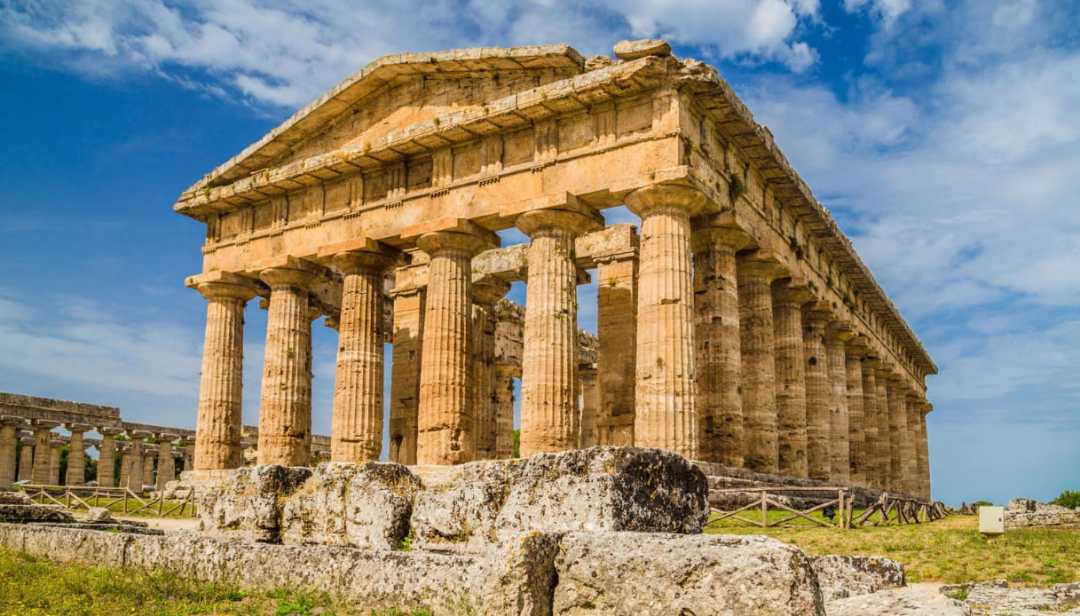Paestum, also known as Pesto, is an ancient city of Magna Graecia called by the founders Poseidonia in honor of Poseidon, but very devoted to Athena and Era. After its conquest by the Lucanians it was called Paistom, to then assume, under the Romans, the name of Paestum. The extension of its built-up area is still well recognizable today, enclosed by its Greek walls, as modified in the Lucan and then Roman periods.
Paestum is surrounded by almost completely preserved walls, with a polygonal perimeter that extends for about 4.75 km, following the course of the travertine bank on which the city stands. It consists of a double curtain wall of large square blocks, filled at the center with earth and interspersed with 28 square and circular towers, almost all reduced to ruins.
The four main access doors open at the cardinal points; there are also a series of as many as 47 smaller openings, the posterule, functional both for access to the city and for the organization of the defense:
the Porta Sirena, so called from a fantastic animal carved with apotropaic functions outside of it, is located on the east side;
on the south side opens Porta Giustizia, with a large entrance vestibule, defended on either side by two towers, a circular one, a square one;
l’ingresso ad ovest, che affaccia verso il mare, avveniva attraverso Porta Marina, dotata anch’essa di un ampio vestibolo lastricato e difesa ai lati da due torri, una circolare ed una quadrata;
little remains instead of the Porta Aurea, north of the city, demolished in the early nineteenth century [14] for the passage of the State Road 18.
More: https://it.wikipedia.org/wiki/Paestum


Ciao, questo è un commento.
Per iniziare a moderare, modificare ed eliminare commenti, visita la schermata commenti nella bacheca.
Gli avatar di chi lascia un commento sono forniti da Gravatar.